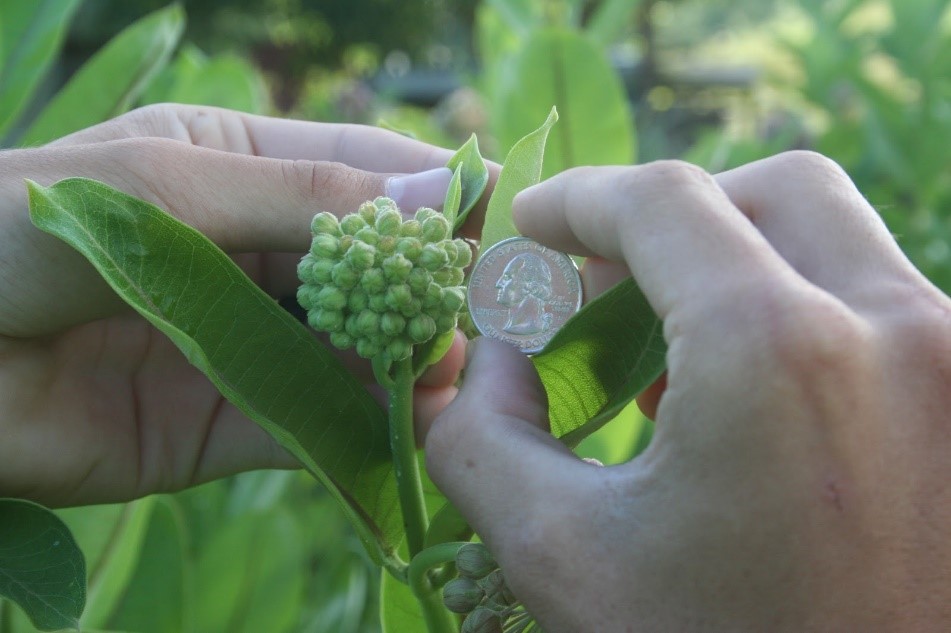
Eating Common Milkweed
Milkweed plants contain toxic compounds called cardiac glycosides, which affect the heart. This is what makes the milkweed eating monarchs toxic to would-be predators. So, when a co-worker, Sara Ice, reported that she had eaten stir fried milkweed buds during a wild edible plant walk at Shaw Nature Reserve, I thought, “What?!? I thought this would kill a person!” However, I could see that she had lived to tell about the experience. So, how do you prepare a milkweed bud?



Common milkweed (Asclepias syriaca) flower buds are needed for this recipe. Make sure to correctly identify the plant because there are several look alikes in the plant world! A helpful tip to identify common milkweed is that when a leaf is pulled off it has a white, milky sap.
Supplies needed to prepare the milkweed are: 1) medium saucepan 2) slotted spoon 3) skillet 4) butter or oil 5) salt and pepper.

Find a bud no bigger than two inches. A good way to assure this is to compare the bud to a quarter as shown in the picture above. After finding a perfect bud, simply pinch off the bud. Once you have enough buds, around 6 per person will do, start cooking.
First, fill the saucepan about halfway with water, and bring it to a boil. While waiting for the water to boil, give the buds a rinse with fresh water. After the water boils, blanch the buds for one minute in hot water. Heat the skillet with enough butter or oil to stir fry the buds. Once a minute in the boiling water has passed, remove the buds from the water and put in the skillet and stir-fry. Once they are fork tender, remove from heat and season with salt and pepper as needed. Now you are ready to eat! When asked what this recipe tasted like, Sara said, “It was truly a unique flavor, but if I had to pick a flavor, I would say it tasted like fresh broccoli.”
Note: There are dangers with eating food of any type (e.g. allergic reactions, foodborne pathogens), and likewise there are risks in eating wild plants. The risks of wild plants include misidentification of a plant, allergic reactions to a plant that doesn’t adversely affect other people, and improper preparation. This article is meant only to relay our experiences; the risks of any foraging adventures on which you choose to embark are your own responsibility.


